A Carrot Revolution Takes Root in Bangladesh
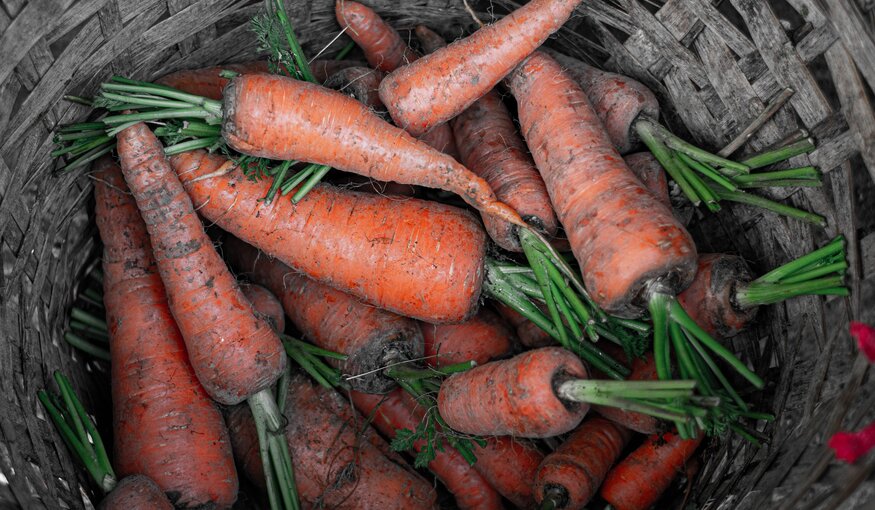
1 September 2020
“Everybody in Bangladesh loves carrots: all social classes, all ages, all religions, all casts,” says M.A. Rahim, a professor at the Bangladesh Agricultural University (BAU). Rahim was the first plant breeder in the country to work on carrots. That was 17 years ago, not long after carrot consumption in Bangladesh started. Yes, it might be hard to believe for such a well-liked crop, but the carrot is relatively new to Bangladesh.
“Two decades ago, carrots were mostly imported. They were a novelty. Since then, farmers across the country have really turned to them as one of their preferred winter season crops,” says Rahim. “Today, demand is at an all-time high and consumption also continues to grow. When it comes to production, though, our farmers are still learning.”
Carrots are fast-growing, nutritious and marketable, so this is potentially good news for thousands of farmers across the country. But they must first learn how to grow a decent crop. Most importantly, farmers need to sow the right seeds; seeds that will grow into tasty carrots, in soil conditions that are often challenging, whilst facing climate change. Rahim is using old landraces and wild relatives, the distant cousins of the vegetable we all know and love, to come up with the very best seeds for conditions in Bangladesh, and boost local production.
The Charisma of Carrots
Packed with beta carotene (which is converted to vitamin A in the body), fiber, vitamin K1, potassium, and antioxidants, carrots are good for us: they improve vision, digestion, kidney function, and immunity. They help prevent cancer, regulate blood pressure, control diabetes, maintain a healthy heart and sound teeth, and reduce incidence of heart diseases.
Carrots can grow in a wide range of soils and climates. Post-harvest losses are low. They can be stored for long periods. The leaves can – and are – used as animal fodder. “In Bangladesh, carrots generate employment, reduce poverty and improve health. They also enhance women’s participation in agriculture, which is always a good thing,” says Rahim.
In spite of the crop’s many virtues, growing consumer demand, and the fact that it is a profitable crop, carrot production in Bangladesh is currently limited in scale and efficiency. Average yields are 35 tons per hectare. Other carrot producing countries, like Belgium (67.25 t/ha), the Netherlands (57.02 t/ha) and Sweden (64.16 t/ha) (FAO, 2017), make it clear there is lots of room for improvement.
“Lower yields are partially due to our farmers’ lack of proper knowledge on how to best to grow the crop,” says Rahim. “But it is also the lack of carrot varieties that are adapted to the realities our farmers face.”
Carrots for Bangladesh
The carrot is a temperate crop. Its evolution, domestication and scientific breeding have not taken into account the needs of farmers in the sub-tropics. That is, until a few years ago, when people like Rahim started taking an interest.
It was natural for Rahim to join the Crop Wild Relatives’ (CWR) carrot pre-breeding project when the opportunity presented itself in 2014. This is a collaborative international effort that brings together scientists from Bangladesh, India, Pakistan, the USA, and the World Vegetable Center.
Under the leadership of world-renowned carrot breeder Phil Simon, from the United States Department of Agriculture (USDA), Rahim and his colleagues are exploring the use of carrot wild relatives in the development of sturdier, climate-proof varieties that can better withstand the heat, drought, salinity, and other agricultural stresses prevalent in sub-tropical countries.
“We are very excited to see some very promising results from initial trials being carried out in the country’s drought-prone north and the saline soils of the south,” says Benjamin Kilian, who coordinates the carrot and other pre-breeding projects at the Crop Trust. “These will soon translate into new varieties that farmers in Bangladesh will be able to grow under conditions that have so far defeated them”.
Earlier this year, Rahim submitted to the Ministry of Agriculture the registration paperwork for seven new carrot varieties. Two of these were selections from genebank accessions that have proven themselves to be resistant to drought and salinity.
“Once we get the green-light from the Ministry, we’ll be able to multiply, distribute and grow these new carrots in Bangladesh,” says Rahim. “It will be a historic milestone for us.”
Other promising lines have already been identified. Out of 186 different carrot types included in trials, Rahim and his team have selected five particularly promising ones for each of the three complex stresses they are evaluating – heat, drought and salinity – in three different regions of the country.
Also in the pipeline are additional sources of heat and drought tolerance identified from crosses with CWR.
To make sure these new carrots will be adopted by the farmers who most need them, the project is also addressing other, related hurdles, including the absence of local seed production, and farmers’ relative unfamiliarity with the crop.
In Bangladesh, almost all of the carrot seeds that farmers sow are imported. Sadly, sometimes seed is not readily available. With promising new carrot materials in the pipeline, Rahim began planning a series of capacity building events focused on both local root and seed production.
Building Capacity
Starting in October 2019, Rahim and his team have carried out 11 training sessions for farmers. These have taken place in four different districts, and a total of 372 farmers have participated. “These workshops are unique, the first of their kind in Bangladesh,” says Rahim.
“What we are offering farmers is a hands-on, step-by-step experience that mixes theoretical and practical lessons,” Rahim adds. “Our overall objective is to help farmers increase their yields, including of seeds, and decrease their production costs.”
In addition, Rahim has trained outreach experts from the public and NGO sectors, who will go out into the field to teach others and, in the process, multiply the impact of the lessons they learned.
The last of these train-the-trainers workshops took place at the BAU, in Mymensingh, from 31 January to 2 February 2020, just before Covid-19. On this occasion, a total of 55 farmers and 43 trainees participated, including scientists from the Bangladesh Agricultural Research Institute (BARI), the Bangladesh Institute of Nuclear Agriculture (BINA), and the Ministry of Agriculture’s Department of Agricultural Extension (DAE); and staff from NGOs such as World Vision and CARITAS.
Rahim, Simon, and other national and international experts spent several days discussing root and seed production technology: everything from seed sowing techniques to pest management, and on to the processing and storage of carrots.
“The knowledge gained during these workshops will allow farmers to choose the right kind of variety for their specific needs and realities,” says Ravishankar Manickam from the World Vegetable Center. “It will lead to an increase in national production of this important vegetable.”
Rahim is already planning additional workshops, to take place as soon as the coronavirus allows. His tentative schedule envisions training 960 additional farmers, at least half of whom will be women, and 250 trainers. That will give carrot production quite a boost.
Nutritional Security
Most Bangladeshis living in rural areas face nutritional problems, including vitamin A deficiency. Carrots, loaded with beta carotene, which our bodies convert into vitamin A, can greatly contribute to nutritional security, especially in the country’s saline and drought-prone areas, where land is underutilized, and diets are relatively poor.
“Half a carrot a day is enough to meet an individual’s need for vitamin A. This means a plot of land a square meter in size could provide all the vitamin A needed for a couple of adults, for a whole year,” Simon says.
Out of about 7,000 square miles in the southern, saline part of the country, and the 10,000 square miles in the northern drought-prone areas, Rahim’s estimates suggest that at least 20-30% can become carrot-producing land.
“Bangladesh is now self-sufficient in food, especially cereals,” he points out. “But it is still not self-sufficient in nutrition. It has the potential to get there, though. All we need are the right carrots.”
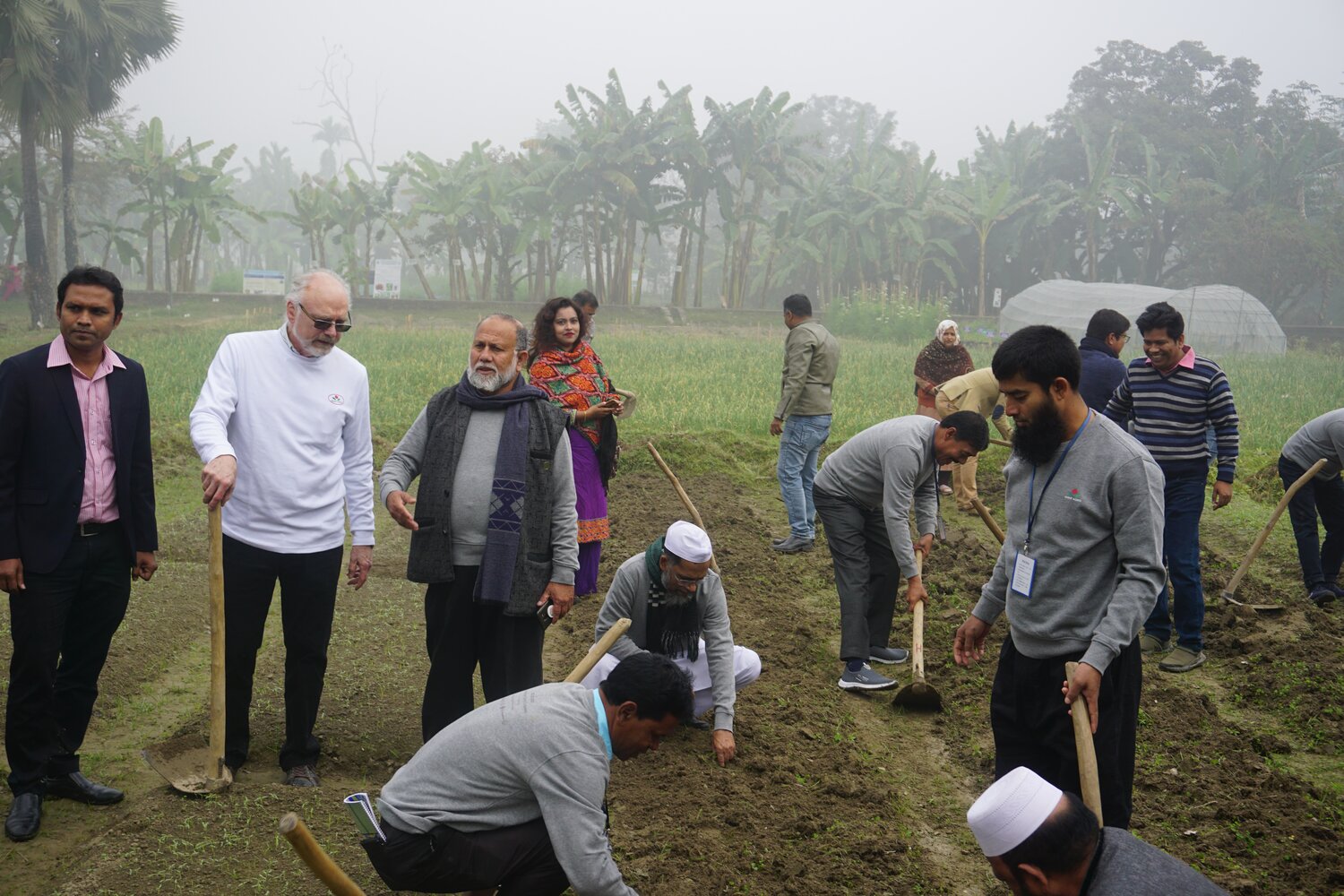
Phil Simon (in white), from the United States Department of Agriculture (USDA), leader of the international carrot pre-breeding project, in discussion with Rahim, while carrot seed production trainers learn how to sow the crop.
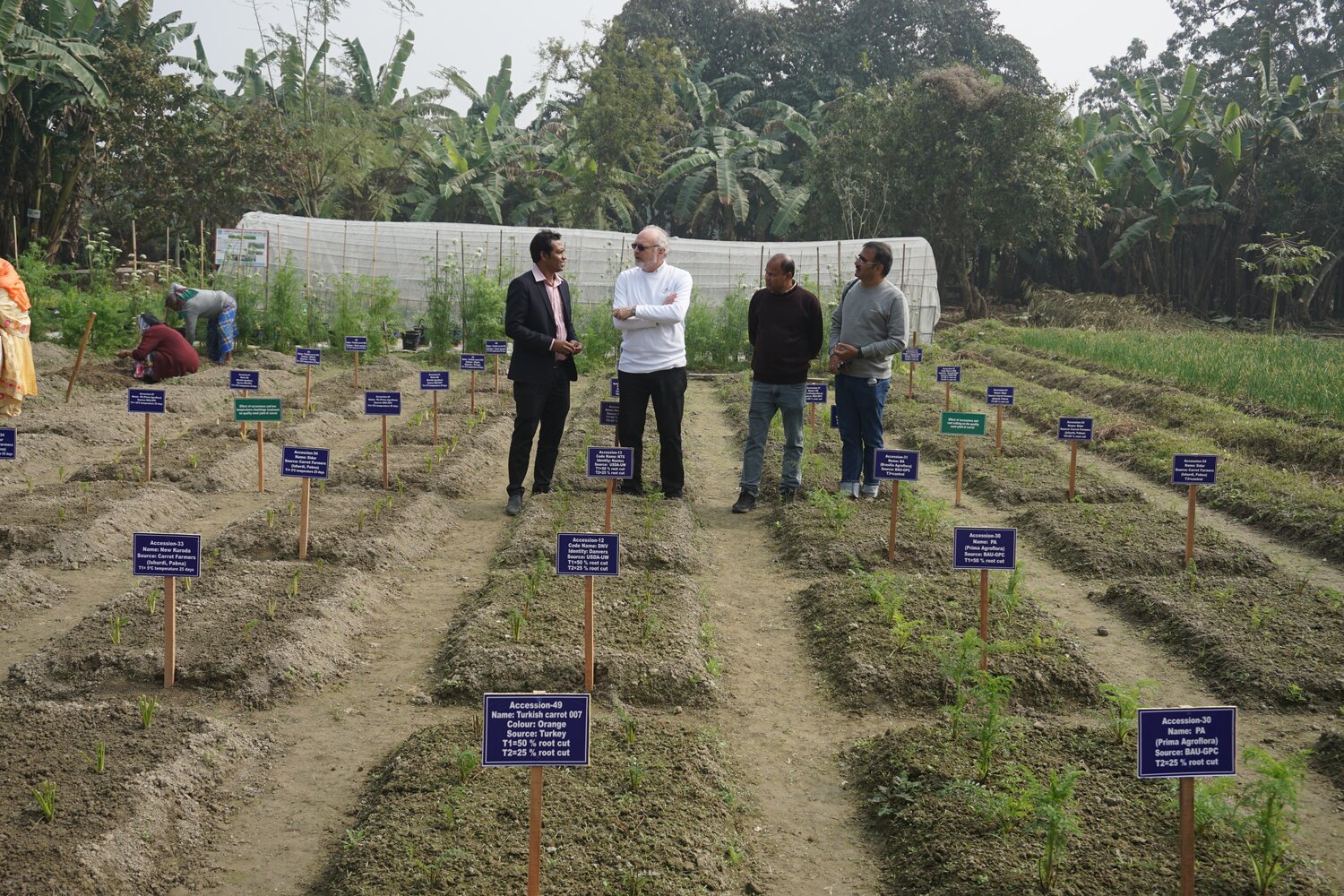
“The blue labels identify the different carrot cultivars that were provided – as seeds – by the USDA genebank and are being used by the training team to initiate the production of the seed crop,” says Simon.
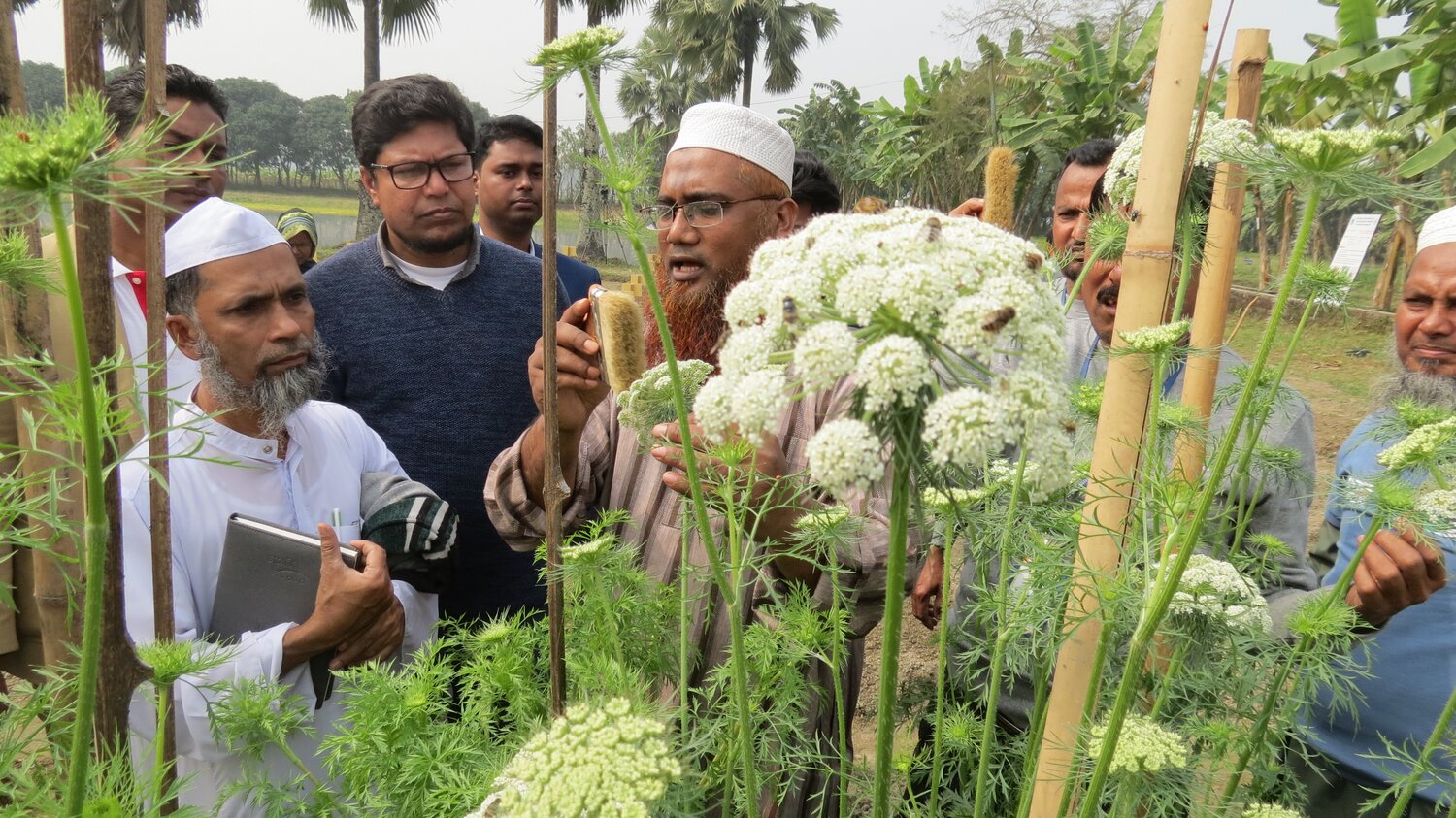
Trainers and trainees discuss carrot diseases, such as Alternaria leaf blight, bacterial leaf blight, bacterial soft rot, and crown rot.
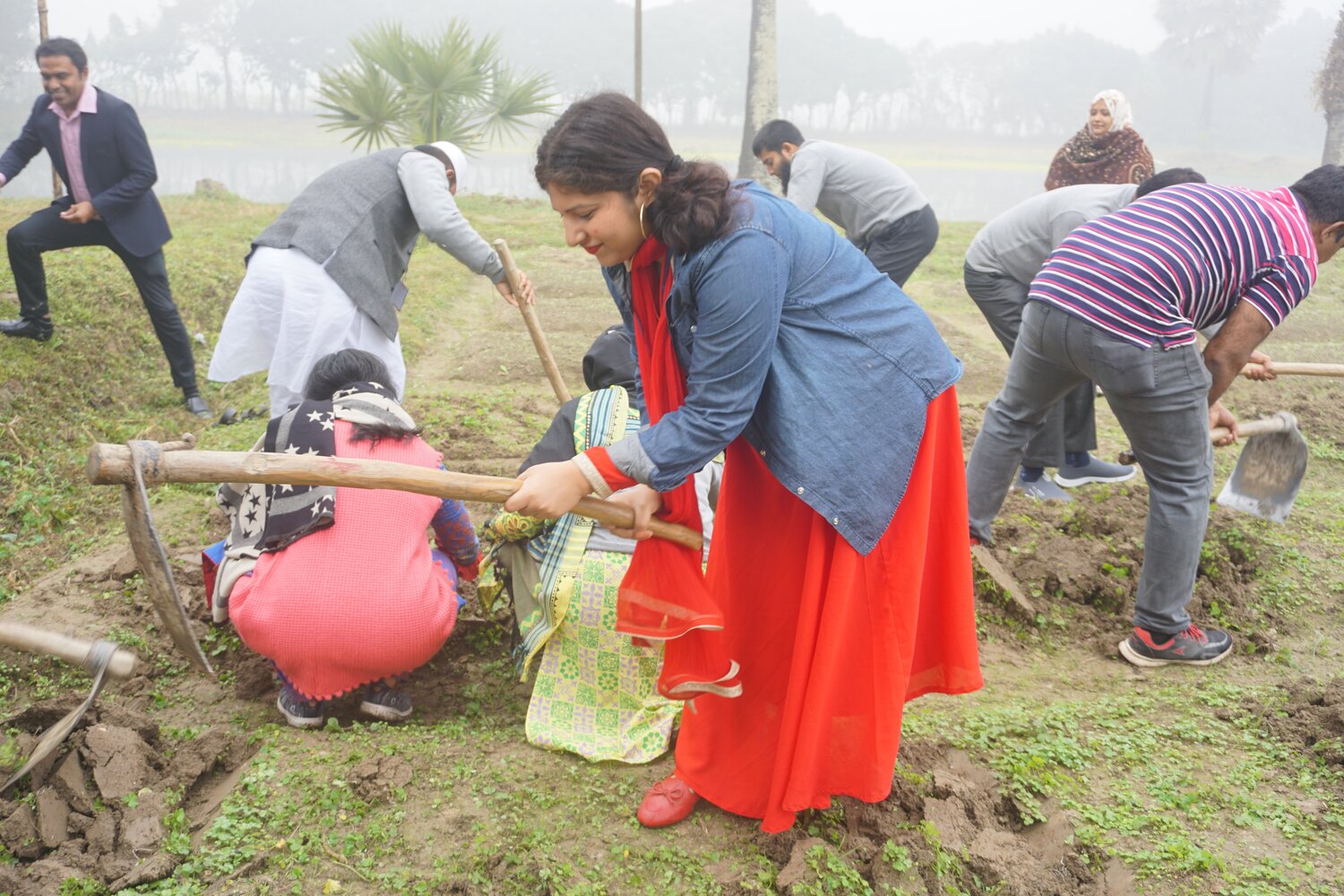
“Women farmers play an important role in agriculture in Bangladesh. They are involved in land preparation, crop harvesting, threshing, storing etc.”, says Rahim. “Furthermore, today, 35-40 % of our extension officers and scientists are women and they are doing their share to develop our agriculture.”
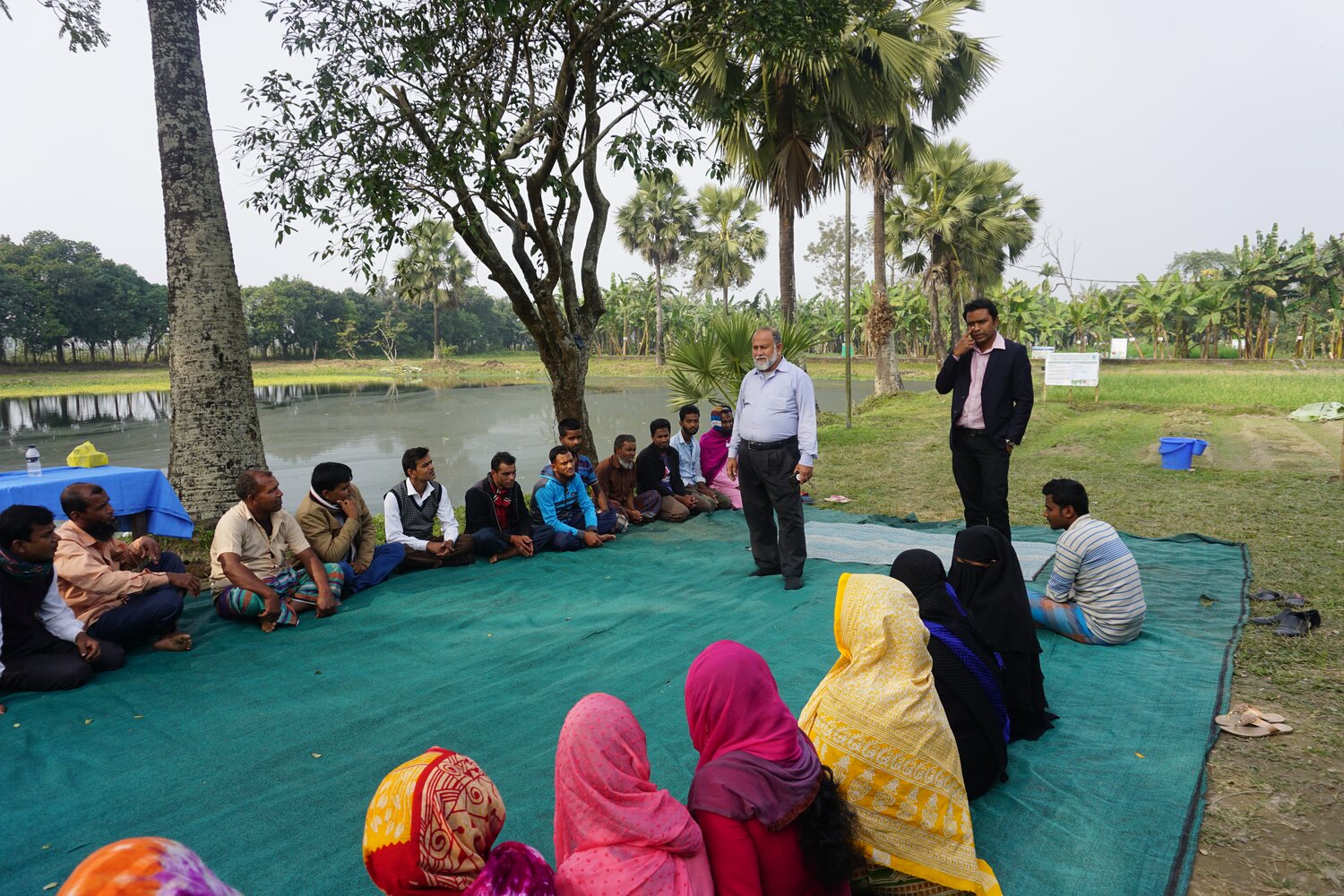
During a farmer training workshop, Rahim (standing left) and one of his graduate students (standing right) give instructions about seed sowing and carrot bed preparation. “To introduce a new variety, innovative farmers play a pioneering role. If he or she obtains satisfactory results in the field, the variety will be rapidly accepted by others”, says Rahim. “Disseminating the latest carrot production technology helps increase the adoption rate of newly developed materials.”
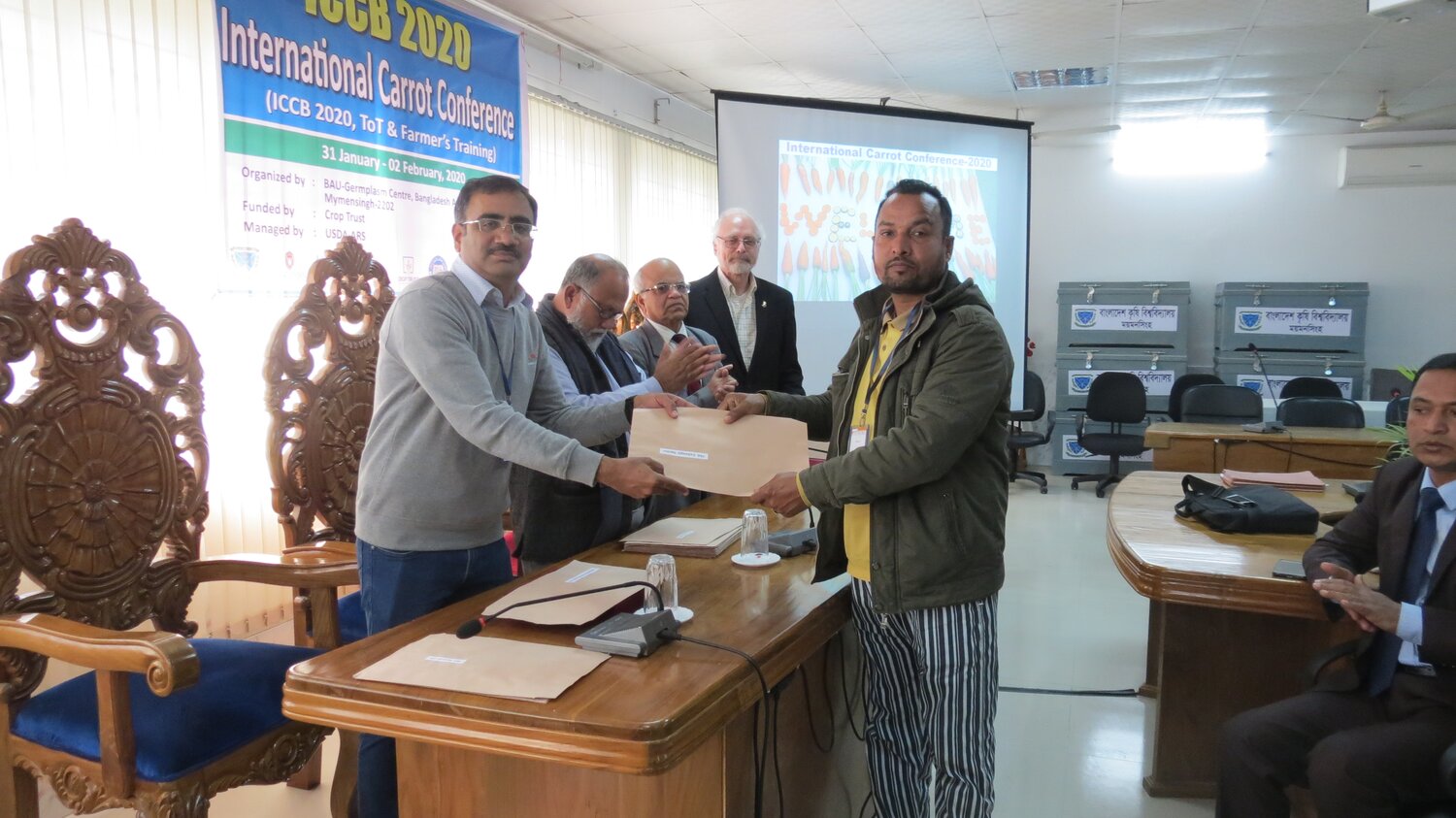
Ravishankar Manickam (left), from the World Vegetable Center, awards a certificate to a participant who, back in February 2020, successfully completed the training-the-trainers course.
The Crop Wild Relatives Project is generously funded by the Norwegian Agency for Development Cooperation (Norad) and coordinated by the Crop Trust.
All agronomic and genetic data generated throughout this project will be shared in the future on the online platforms Germinate and CarrotOmics, database platforms that provide a standard and common interface to genetic resources collections.
Seeds of the improved wild-derived carrot lines developed during this project will be stored at the World Vegetable Center and the USDA-ARS to be shared under the terms and conditions of the Standard Material Transfer Agreement (SMTA) within the framework of the Multilateral System of the International Treaty for Plant Genetic Resources for Food and Agriculture.
This article was originally published on the Crop Wild Relatives (CWR) Project website.
The CWR Project, which ran from 2011 to the end of 2021, was managed by the Crop Trust with the Royal Botanic Gardens, Kew, and implemented in partnership with national and international genebanks and plant breeding programs around the world. This global team of experts collected important species of crop wild relatives, ensured their long-term conservation, and facilitated their use in breeding new, improved crops. The CWR Project was generously supported by the Government of Norway. Launched in 2021, Biodiversity for Opportunities, Livelihoods and Development (BOLD) builds on the work and achievements of the decade-long CWR Project.
Category: Carrot
